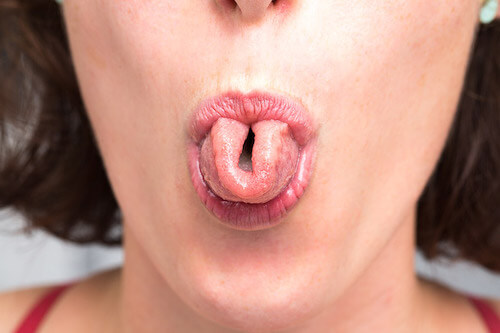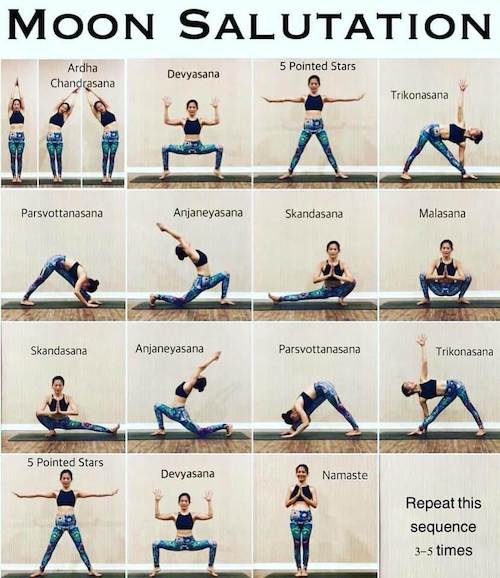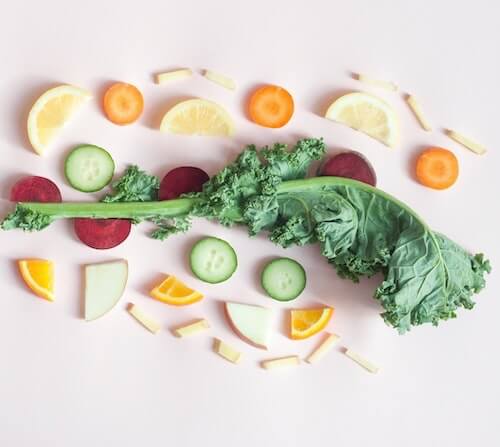Pitta dosha when out of balance causes acidity, reflux, and rashes on the skin. If you have seen these symptoms lately, your pitta might be out of balance. To balance pitta dosha, Charak Samahita,(Oldest Ayuvedic manual) prescribes changes in diet and lifestyle.
But where do you start? Do you eliminate all the pitta aggravating things from your diet? How much time will it take for pitta to get back to normal?
I know how confusing it can be for a beginner.
Pitta dosha is the fiery dosha which governs metabolism and transformation in the body. When pitta becomes out of balance, it can cause severe problems like ulcers, autoimmune disorders, acne, rashes, burning sensation in your body.
Several other symptoms in your body which can tell when your Pitta Dosha is out of balance. If you are new to the concept of doshas and their imbalance, here are some resources for you.
What are Ayurvedic doshas- Vata, Pitta, Kapha?
What are the symptoms of pitta dosha?
Now you must be wondering what happens when Pitta goes out of balance. Pita can go out of balance in two ways- it can either aggravate or it can subdue. However, most people looking to balance Pitta dosha have it aggravated.
We explained this in our previous articles how your prominent dosa affects the imbalance of doses in your body. For example, if you are a Pitta dosha dominant person and your pitta Dosha goes out of balance it is more likely you will observe problems associated with the aggravation like acne rashes for acidity.
Ayurveda recommends food and Lifestyle choices to help you to rebalance the doshas. Every dosha in Ayurveda has a set of specific vegetables, fruits, beans or grains that are beneficial for them.
We will explore in the detail what these options are for Pitta dosha. Apart from that, we will also see Pranayama techniques which are beneficial for Pitta dosha and certain Kriyas that you can do simply at home to eliminate excess pitta from your body quickly
How can I get instant relief from Pitta?
When your body has excess pitta, It leaks into your circulatory system like blood and lymph. The first step towards balancing your pitta dosha is to eliminate the excess formation from the body.
Vaman
Vaman or induced vomiting is an Ayurvedic Kriya to remove excess toxins from the stomach and intestine. It is also a part of the five kriyas in Panchakarma. This is a very straightforward technique.
Once a week on an empty stomach, gulp down 5-6 glasses on lukewarm saline water. Your stomach will try to throw up on its own. If not, use your finger to induce vomiting.
Vaman removes excess pitta in the stomach and quickly gets your stomach back to normal.
If your pitta aggravation or acidity is extreme, you can repeat this every week for 1 month and then once in two weeks for the next few months.
Abhyanga
A daily self-massage with a dosha specific oil can reduce pitta aggravation. For pitta people, coconut oil is the ideal oil for massage.
Coconut oil has cooling properties. A daily oil massage removes debris from clogged pores and allows better circulation in the body.
Blood Purifier
Blood purifying herbs like Burdock removes toxins from the blood. Other blood-purifying herbs are saffron, sandalwood powder, turmeric and calamus root powder. Pomegranate juice, orange juice and asparagus root are also beneficial for blood ailments. These herbs can be taken in the form of tea before sleeping. The purifier will work throughout the night to remove toxins from the blood.
Steam bath
In Ayurveda, your body removes toxins from three channels, faeces, urine and sweat. Some people have their skin pores clogged and are unable to reduce their body heat through perspiration. A steam bath opens up the pores and allows toxins to move out through the skin. You can see an instant glow in the skin after a steam bath.
Cooling herbs
Cooling herbs like fennel, coriander and mint are beneficial in balancing pitta dosha. The cooling herbs can be taken after meals or as a hot tea. Hot water increases the efficacy of these herbs by extracting important oils and anti-oxidants in the water.
Diet for pitta dosha?
Diet should be chosen to suit the individual constitution. If we understand body constitutions and its relationship to the qualities of various foods, it is possible to select a proper diet.
We need to take into account the taste of the food (sweet, sour, salty, pungent, bitter or astringent) and also whether it is heavy or light, hot- or cold producing, oily or dry, liquid or solid. The seasons of the year must also be considered in choosing a diet.
For eg., Pitta is the dominant force in nature during the summers. It is very commonly seen that people with the dominant pitta dosha experience pitta aggravation during the summer months. Eating spicy food in summers can aggravate pitta.
Increase of the pitta dosha can be caused by spicy foods, peanut butter, sour fruits, bananas, papayas, tomatoes and garlic. Here is the complete list of fruits and vegetables that pitta people should and shouldn’t eat.
Fruits
| Eat | Avoid |
| Sweet Fruits | Sour fruits |
| Apples | Cherries |
| Avocado | Bananas |
| Plums (Sweet)
Pineapple (sweet) |
Berries
Peaches |
| Pomegranate | Papaya |
| Raisins | Cranberries |
| Prunes | Grapefruit |
| Pears | Lemons |
| Melons | Apricots |
| Oranges | Plums (Sour) |
| Mango | Grapes (Green) |
| Grapes | |
| Figs | |
| Coconut |
Vegetables
| Eat | Avoid |
| Sweet & Bitter vegetables | Pungent vegetables |
| Asparagus | Beets |
| Broccoli | Carrots |
| Brussels Sprouts | Eggplants |
| Mushrooms | Garlic |
| Lettuce | Onions |
| Celery | Peppers |
| Green leafy vegetables | Radishes |
| Cucumber | Spinach |
| Bottle gourd | Tomatoes |
| Bitter gourd | |
| Okra | |
| Beans | |
| Parsley | |
| Potatoes | |
| Sprouts | |
| Zucchini | |
| Cauliflower | |
| Cabbage |
Grains
| Eat | Avoid |
| Barley | Buckwheat |
| Oats (cooked) | Corn |
| Rice | Millet |
| Wheat | Oats |
| Rice | |
| Rye |
Meat
| Eat | Avoid |
| Chicken or turkey | Beef |
| Eggs | Lamb |
| Rabbit | Pork |
| Shrimp | Seafood |
Dairy
| Have | Avoid |
| Butter (Unsalted) | Buttermilk |
| Cottage cheese | Cheese |
| Ghee | Sour cream |
| Milk | Yoghurt |
Oils
| Have | Avoid |
| Olive | Corn |
| Sunflower | Safflower |
| Soy | Sesame |
Legumes
All Legumes OK except Lentils
Seeds
No Seeds except Sunflower & Pumpkin
Sweeteners
All Sweeteners are OK except Molasses & Honey
Spices
No Spices except Coriander, Cinnamon, All Spices are Good Except Salt Cardamom. Fennel, Turmeric & Small Amount of Black Pepper
These are some of the basic guidelines based on the properties of the food. If your pitta is aggravated for a short time, you can start eating the prohibited food gradually once pitta is in balance. If you have a chronic pitta aggravation, then you must exercise caution for a long time.
For pitta dominant people, it is advisable to follow this basic guideline and listen to their bodies. Some people argue about leaving all these wonderful food options not available to them. To that Ayurveda says, not every food is meant for everybody. A lion can digest raw meat but a goat can’t.
Nor does the goat crave for raw meat because of their body’s own intelligence. If we tap into this intelligence, our body will gradually start telling us intuitively what we can and can not eat.
Eating meat or not is yet another debate in Ayurveda. Eating meat is not prohibited in Ayurveda. But Ayurveda favours a Sattvic vegetarian diet above all to maintain vitality and longevity.
Yoga practitioners and sages follow the core principle of Ahimsa and Sattvic food. Not eating meat is a choice they make.
Pranayama for Pitta balance
Two most cooling pranayams are Sitali and Sitkari pranayama. The words Sitali and Sitkari literally means cool air. These two cooling pranayama practices are especially beneficial for lowering pitta dosha.
Sitali and Sitkari cool the body and add moisture to the system. In addition, this practice reduces fatigue, bad breath, fevers, and high blood pressure.
Both pranayamas should be practised in the morning on an empty stomach for real benefits.
Sitali Pranayama

1. To do Sitali pranayama, sit in a comfortable position.
2. Make an O with your lips and curl your tongue from the sides and stick it out
3. Now inhale through your mouth
4. Exhale through your nose
5. Repeat the process 10 times
Sitkari Pranayama

To do Sitkari Pranayama,
1. Sit in a comfortable position
2. Open your lips like you do when you smile and show your teeth
3. Join your upper jaw and lower jaw and keep the grin on
4. Now inhale through your mouth. Let the air travel from between your teeth
5. Exhale through your nose
6.Repeat it 10 times
Lifestyle to balance Pitta dosha
1. Wake up before sunrise
Before sunrise, Vata is the primary cooling force in nature. When you wake up before sunrise, the cool air soothes excess pitta. 4:30-6 am is known as the Brahmanuharat or the time when consciousness is most alive.
2.Drink a glass of warm water with aloe vera juice
Aloe vera juice has cooling properties. After waking up, drink a glass of aloe vera juice mixed in warm water (if you live in a cold country or during winters).
3. Yoga & pranayama practice
Cooling sequences like Moon salutations, fish, boat, bow poses helps in balancing pitta dosha.

4. Meditate
A daily 10 meditation practise can soothe your mind and activate your parasympathetic nervous system. Our bodies are constantly in the fight or flight stage. Meditating every day reduces stress and anxiety and brings down our cortisol level. Cortisol is responsible for increased pitta in the body.
5. Walk on wet grass
There is nothing more soothing than walking on wet dewy grass for balancing pitta dosha. Be cautious during winter though. This practice should be done during the warm summer months only. During winters the grass is extremely cold and leads to cough, cold or cold sores on feet.
6. Eat light Sattvic food
Pitta people should follow the dietary guidelines above and make a habit of eating light sattvic food. Heavy, oily, spicy and extremely sour food should be avoided. Avoid processed & junk foods as well. Most processed food contains refined sugars and oils, which are bad for all doshas.
Additional tips to balance pitta dosha
1. Breakfast smoothies should be made in coconut milk or oats milk. Avoid using fruits with yoghurt as it is pitta inducing.
2. Eat the right combination of food. Don’t mix fruits with vegetables or milk.
3. Wear light coloured cotton clothes during summer
4. Eat three proper meals on a regular basis every day. Avoid snacking in between.
Conclusion
Pitta dosha can be balanced easily if you take care of your diet and lifestyle. But sometimes, we need an Ayurvedic expert to guide us. Take a proper consultation if you have tried all these methods and nothing seems to be working.
Panchakarma is a very beneficial therapy for balancing doshas. There are many NAMA certified practitioners offering Panchakarma treatment in The USA today.
Here are some of the best centres for Panchakarma in the USA.
Apart from panchakarma therapy, Ayurvedic practitioners might prescribe you a daily dosage of Ayurvedic herbs, potions or Churna.
Start listening to your body and let it lead you.
How did you handle your pitta dosha? What was your experience with Ayurvedic diet?
Found this helpful? Share it with your friends and family.
Follow us on Facebook and Pinterest and be a part of our growing community.
Chakshu is a US alliance certified yoga teacher, a biotechnologist and an Ayurveda evangelist. Her passion is to help people live a toxic-free life, emotionally and chemically. She loves reading self-help books. When she is not writing, she is busy thinking about life.


